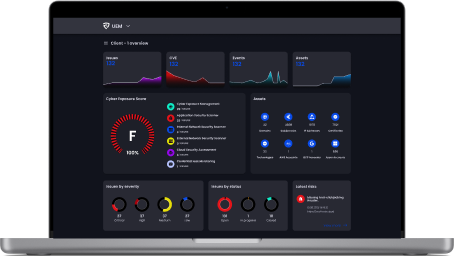CORS
Scenarios Demonstrating CORS Security:
- Normal Scenario: Secure CORS Policy
Imagine you visit a banking website where you have logged in securely. This website might use CORS to restrict access to its APIs from other origins (domains). If another website attempts to make requests to the banking API on your behalf from a different domain, CORS policies enforced by the browser would block these requests. This prevents unauthorized actions and protects your banking data from being accessed by malicious sites.
- Vulnerable Scenario: Insecure CORS Policy
Now, consider the same banking website, but this time it’s vulnerable to CORS misconfiguration. If the CORS policy is improperly set to allow any origin, a malicious website could exploit this vulnerability. When you visit a malicious site while logged into your banking account, it could make requests to the banking API on your behalf without your knowledge. This could allow the attacker to perform unauthorized actions, such as transferring funds or accessing sensitive information, compromising your banking data and potentially leading to significant financial loss.
CORS Vulnerability Example:
Normal Request Scenario:
Let’s imagine you are visiting a secure banking website with the domain secure-bank.com. This website uses CORS to control who can access its APIs.
When you log in to your bank account and perform an action like viewing your account balance, your browser sends a request like this:
GET /account-balance HTTP/1.1
Host: secure-bank.com
Origin: https://secure-bank.com
Host: secure-bank.com
Origin:
The secure-bank.com server responds:
HTTP/1.1 200 OK
Access-Control-Allow-Origin: https://secure-bank.com
Access-Control-Allow-Origin: https://secure-bank.com
Since the Origin matches the Access-Control-Allow-Origin, your browser allows the response to be accessed by the script on secure-bank.com and not any outside or malicious website.
Vulnerable Request Scenario
Now, let’s consider what happens if secure-bank.com has a misconfigured CORS policy that allows requests from any origin. An attacker sets up a malicious website with the domain evil-site.com.
When you visit evil-site.com, the malicious site can send a request to secure-bank.com on your behalf:
GET /account-balance HTTP/1.1
Host: secure-bank.com
Origin: https://evil-site.com
Cookie: sessionid=your-session-cookie
Host: secure-bank.com
Origin: https://evil-site.com
Cookie: sessionid=your-session-cookie
If secure-bank.com responds with:
HTTP/1.1 200 OK
Access-Control-Allow-Origin: https://evil-site.com
Access-Control-Allow-Credentials: true
Access-Control-Allow-Origin: https://evil-site.com
Access-Control-Allow-Credentials: true
This response means that secure-bank.com allows evil-site.com to access your account balance data and includes your session cookie in the request. The malicious site can now view your private account data without your knowledge.
CORS vulnerabilities can pose several risks:
- Unauthorized data access: If CORS policies are not properly configured, sensitive data meant to be restricted to certain origins may be accessed by unauthorized parties.
- Cross-Site Request Forgery (CSRF): Improper CORS settings can lead to CSRF attacks where malicious websites trick users into unknowingly performing actions on other sites where they are authenticated.
- Data theft: Attackers could exploit relaxed CORS policies to steal sensitive information, manipulate data, or perform actions on behalf of authenticated users.
Remediation for CORS Vulnerabilities:
To mitigate CORS vulnerabilities and protect sensitive data, follow these best practices:
- Restrict Allowed Origins
Only allow trusted origins to access your resources. Avoid using the wildcard * unless absolutely necessary, and never use it for sensitive endpoints.
Access-Control-Allow-Origin: https://trusted-website.com
- Avoid Allowing Credentials with Wildcard Origins
Never use Access-Control-Allow-Credentials: true with Access-Control-Allow-Origin: *. This combination can lead to severe security issues.
Correct Example:
Access-Control-Allow-Origin: https://trusted-website.com
Access-Control-Allow-Credentials: true
Access-Control-Allow-Credentials: true
- Use Preflight Requests for Sensitive Operations
Ensure that sensitive endpoints require a preflight request by setting appropriate headers for methods like POST, PUT, DELETE, etc.
Example:
Access-Control-Allow-Methods: POST, GET, OPTIONS
Access-Control-Allow-Headers: Content-Type, Authorization
Access-Control-Allow-Headers: Content-Type, Authorization
Conclusion:
In conclusion, understanding and correctly implementing CORS policies is crucial for maintaining web application security. Misconfigured CORS settings can lead to severe vulnerabilities, such as unauthorized data access, CSRF attacks, and data theft. By restricting allowed origins, avoiding risky configurations, and ensuring sensitive operations require preflight requests, you can significantly mitigate these risks. Proper CORS implementation not only protects user data but also fortifies the overall security posture of your web applications.
Ready to see for yourself?
Test drives all platform features for yourself. No commitment and No credit card!




.svg)
.svg)
.svg)
.svg)



.svg)
.svg)
.svg)
.svg)
.svg)
.svg)
.svg)

